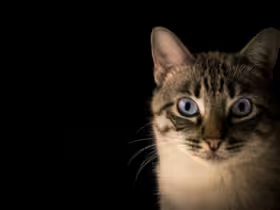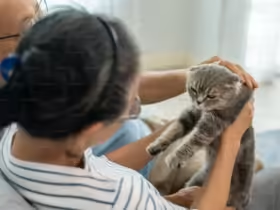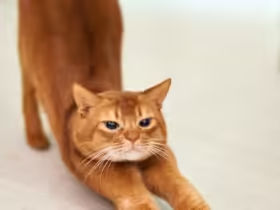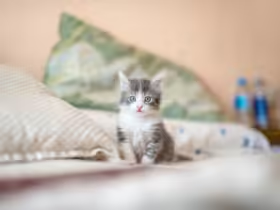Dehydration in cats is a serious condition that requires prompt attention. Whether due to illness, heat, or lack of water, dehydration can lead to severe health issues if not addressed quickly. This comprehensive guide will help you understand the symptoms of dehydration in cats, explore effective treatments, and provide tips to ensure your kitty stays well-hydrated.
Understanding Cat Dehydration
What is Dehydration?
Dehydration occurs when a cat loses more fluids than it takes in, leading to a lack of essential water in the body. Since water is crucial for nearly all bodily functions, including digestion, circulation, and temperature regulation, dehydration can quickly become a serious health concern.
Causes of Dehydration in Cats
Several factors can contribute to dehydration in cats:
- Illness: Conditions such as kidney disease, diabetes, or gastrointestinal issues can lead to increased fluid loss.
- Heatstroke: High temperatures and lack of access to water can cause overheating and dehydration.
- Vomiting or Diarrhea: Excessive vomiting or diarrhea can result in significant fluid loss.
- Reduced Water Intake: Cats that do not drink enough water, often due to preference for dry food or a lack of clean water, can become dehydrated.
- Urinary Tract Problems: Conditions like urinary tract infections or blockages can lead to dehydration.
Recognizing Symptoms of Dehydration in Cats
Early Signs
Identifying dehydration early can prevent severe complications. Watch for these initial signs:
- Reduced Skin Elasticity: Gently pinch the skin on the back of your cat’s neck or between the shoulder blades. If the skin doesn’t snap back quickly, it may indicate dehydration.
- Dry Mouth and Gums: Check if your cat’s mouth and gums are dry. Healthy gums should be moist and slick.
- Increased Thirst: An increased desire to drink water can be a sign of dehydration.
Advanced Symptoms
As dehydration progresses, symptoms may become more pronounced:
- Lethargy: Your cat may appear unusually tired or weak.
- Sunken Eyes: The eyes may look sunken or less bright than usual.
- Panting: Cats usually do not pant, so if you observe this behavior, it could be a sign of dehydration or heatstroke.
- Dark Urine: Urine that is darker than normal can indicate dehydration.
- Loss of Appetite: A dehydrated cat may show reduced interest in food.
Diagnosing Dehydration
Veterinary Examination
If you suspect your cat is dehydrated, it’s essential to consult a veterinarian. The vet will perform a thorough examination and may use the following methods to diagnose dehydration:
- Physical Examination: The vet will assess your cat’s hydration status by checking skin elasticity, gum moisture, and overall condition.
- Blood Tests: These can help identify underlying conditions contributing to dehydration and assess kidney and liver function.
- Urinalysis: To evaluate the concentration of urine and detect any urinary tract issues.
- Diagnostic Imaging: In some cases, X-rays or ultrasounds may be used to check for underlying causes such as tumors or obstructions.
Treating Dehydration in Cats
At-Home Care
If dehydration is mild, you may be able to manage it at home with these steps:
- Encourage Water Intake: Offer fresh, clean water and encourage your cat to drink. Some cats prefer running water from a fountain, so consider providing one if your cat is reluctant to drink.
- Wet Food: Incorporate wet food into your cat’s diet, which contains higher moisture levels compared to dry food.
- Hydration Solutions: Offer oral rehydration solutions designed for pets, which can help replenish fluids and electrolytes. Consult your vet for appropriate options.
Veterinary Treatment
For moderate to severe dehydration, professional veterinary care is necessary:
- Subcutaneous Fluids: The vet may administer fluids under the skin (subcutaneously) to rehydrate your cat. This treatment is typically done in a clinic but can sometimes be performed at home with proper training.
- Intravenous Fluids: In cases of severe dehydration or when immediate rehydration is required, intravenous fluids may be administered.
- Medications: If an underlying condition is causing the dehydration, your vet will prescribe appropriate medications to address the issue.
- Treatment of Underlying Causes: If dehydration is due to an illness, such as kidney disease or diabetes, treating the underlying condition is crucial for effective management.
Preventing Dehydration
Ensuring Access to Fresh Water
Prevention is key to avoiding dehydration:
- Provide Clean Water: Ensure your cat always has access to clean, fresh water. Change the water daily and wash the water bowl regularly.
- Multiple Water Sources: Place water bowls in different locations to encourage drinking.
Nutritional Considerations
Diet can play a significant role in hydration:
- Incorporate Wet Food: Wet cat food provides additional moisture and can be beneficial for hydration.
- Balanced Diet: Ensure your cat’s diet is balanced and meets their nutritional needs.
Environmental Management
Creating a comfortable environment can help prevent dehydration:
- Maintain a Cool Environment: Ensure your home is cool and well-ventilated, especially during hot weather.
- Avoid Overexertion: Limit exercise and play during hot weather to prevent overheating and dehydration.
Regular Vet Check-Ups
Regular veterinary check-ups can help catch potential health issues before they lead to dehydration. Routine exams allow your vet to monitor your cat’s overall health and adjust their care as needed.
When to Seek Immediate Veterinary Care
Seek immediate veterinary attention if you notice:
- Severe Symptoms: Signs such as severe lethargy, sunken eyes, or persistent vomiting and diarrhea.
- Rapid Decline: If your cat’s condition worsens rapidly despite your efforts to rehydrate them











Leave a Reply